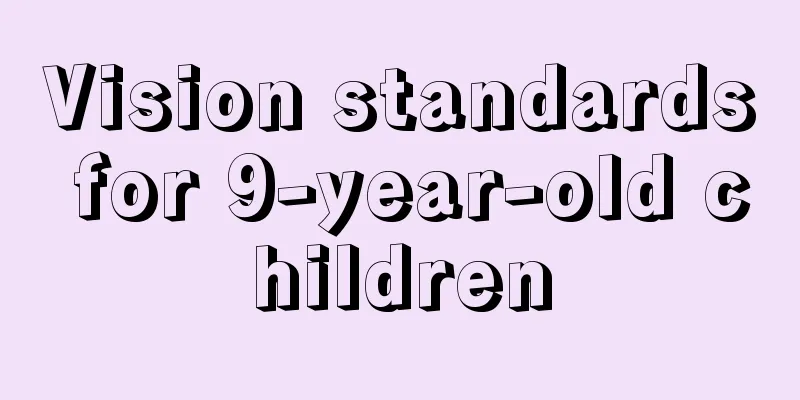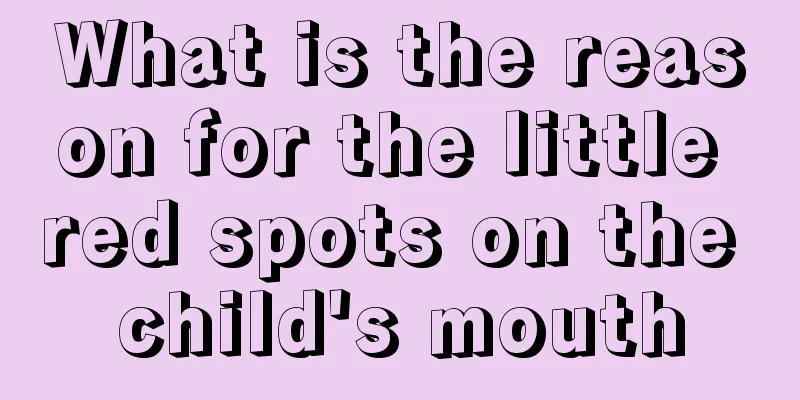Vision standards for 9-year-old children

|
In fact, many friends mistakenly believe that a baby’s vision is the same as that of an adult when it is born. In fact, this is not the case. After a baby is born, its body functions are gradually maturing, so there will be a process during this period and it has not reached a fully mature state. The vision standard of a 9-year-old child can be the same as that of a normal person, and he or she will have stereoscopic vision function. Within 1 month: One week after birth, the baby's vision tends to be myopic. He can focus on objects 8 to 15 cm away and can follow moving objects with his eyes. Present a ring above the baby's head and move it vertically to observe whether the baby can immediately follow the red ring with his eyes. After a week, he will be able to see objects 3 meters away. He will also learn to track moving objects and like to look at people's faces or high-contrast patterns. The movements of his two eyes are not yet coordinated enough. When the baby is more than one month old, he can see clearly objects within 15-30 cm in front of him and can focus on objects. 2 months: At 2 months old, the baby's visual concentration becomes more and more obvious. He likes to look at moving objects and familiar adults' faces. Can focus on objects in a coordinated manner and distinguish colors, but cannot distinguish depth. The eyeballs can move with objects within a 90-degree range. When objects approach the eyes quickly, protective reflexes such as blinking will appear, and the child will focus on the hand for more than 5 seconds. 3-4 months: At 3 months, the baby can fix his vision and see objects about 75 cm away, with a visual acuity of about 0.1. The gaze time is significantly prolonged, and the line of sight can follow moving objects. For example, when the baby is sleeping in the crib and the mother walks by, his eyes can follow the mother's body and like to look at his own hands. Babies are very sensitive to colors. They have a preference for colors and like to see bright and vivid colors, especially red, and do not like to see dull colors. Their preferred colors are red, yellow, green, orange, blue, etc., so we often use red toys to attract children for this reason. When lying on your back, your eyes will track the person who is moving. Walk around in front of your baby often to attract his attention and observe whether his eyes follow you. 5-6 months: The baby blinks more frequently and can accurately see objects in front of him. He will also pick them up and play with them in front of his eyes. Hang a rattle next to the cradle or crib, and when your child accidentally touches the rattle, observe whether the sound draws your baby's attention to an object somewhere. When a child sits up to play, he can manipulate objects with his hands under the control of his eyes. He will stare at what he has picked up, and his hands and eyes begin to coordinate. Show the toy in front of the baby and move it slowly up, down, left and right to observe whether the baby can consciously and actively follow it. When the baby is over 6 months old, the eyes can follow moving objects up and down and turn 90 degrees. At this time, the child's vision can reach 0.1, and he can see objects at a longer distance, such as pedestrians and vehicles on the street. 7-8 months: Able to distinguish the distance and space of objects; like to look for toys that suddenly disappear; play "hide and seek" with the baby, and observe the baby's excitement level and whether the reaction is timely. 9-10 months: The baby's eyes can move up, down, left and right following moving objects. The baby can follow falling objects, look for dropped toys, and distinguish the size, shape and speed of movement of objects. Can see small objects and can begin to distinguish simple geometric shapes and observe different shapes of objects. The sense of visual depth begins to appear, which is actually a kind of stereoscopic perception. 11-12 months: The line of sight can move up, down, left and right with moving objects, and can follow falling objects; the visual acuity can reach 0.2 at 1 year old. 1-2 years old: After 1 year old, children like to read books, can distinguish objects, and imitate actions. Under the constant stimulation of external light, the child's vision gradually develops. When he is 1.5 years old, his vision can reach 0.4. He can see small things such as crawling insects and mosquitoes, and can focus on small toys 3 meters away. It can also distinguish simple shapes such as circles, triangles, and squares. 2-5 years old: Children at this stage can judge spatial concepts such as the size of objects, up and down, inside and outside, front and back, far and near. 2-3 years old: Binocular vision develops most rapidly. At 2-3, the visual acuity reaches about 0.5-0.6, which is almost close to adult vision, but it is very easy to lose vision at this time. At the age of four or five, the visual acuity is about 1.0, and various eye physiological reflexes have been formed and become stable, making it less likely for children to lose their vision. 6 years old: Enters adult vision at the age of six or seven. That is, at least in 1.0. The stereoscopic vision function can only reach normal at the age of 9. Nowadays, there are more and more children with myopia, and the age is getting younger and younger. Therefore, parents must pay attention to their children's eyesight and have them have their eyesight checked regularly. If you find that your child's vision is deteriorating, you should take medication in time. Doctors generally recommend taking Lejing vision nutrients with warm water. If you take it for a period of time, your vision will improve and it can also prevent or treat myopia. |
<<: What should I do if my child is very thin and doesn't grow meat?
>>: What to do if your child has poor eyesight
Recommend
What to do if your child procrastinates on homework
If parents find that their children are procrasti...
How often should a baby take a bath? Tips for mothers
We all know that the baby's skin must be care...
Is it serious if a child has occult blood?
Children's occult blood 10 is a result that m...
Symptoms of hydrocele in children
Pediatric development issues have become an incre...
4 month old baby crying before going to bed
The situation of babies crying before going to be...
What should children with precocious puberty eat?
The name of precocious puberty has spread to thou...
The harm of eating adult food for babies
After the baby is 6 months old, mothers will comp...
What should I do if my baby has a fever and diarrhea?
Nowadays, babies are always sick, such as having ...
Treatment and normal values of elevated cardiac enzymes in infants
Because babies are newborns, they have poor resis...
Why do children cry in the middle of the night?
If a child always cries in the middle of the nigh...
What are the dangers of intravenous infusion in children?
For many diseases of the body, people generally c...
How high is the fever when the baby has convulsions?
We all want our children to grow up healthy and h...
How to treat constipation in children?
Constipation in children is common in our lives. ...
Which part should be massaged when a child has a cough?
In places where children gather, we often see som...
Treatment of pharyngeal ulcers in children
Pharyngeal ulcer in children is one of the diseas...









